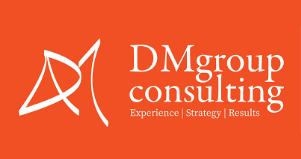Securing a grant can be a game-changer for your nonprofit, providing vital funds to support projects and initiatives. Yet, applying for grants can feel like a daunting task. With the right approach and preparation, navigating this process becomes much more manageable and increases your chances of success.
Successful grant applications start with a solid understanding of the entire process. Whether you’re new to grant writing or looking to improve your skills, focusing on the critical elements of application can make a big difference. Knowing how to craft a persuasive proposal and ensuring all documents are in order is essential.
Following up after submission is another crucial step that many overlook. Establishing a connection with grantmakers shows dedication and can set your application apart. Master these steps, and you’ll be well on your way to boosting your grant application success.
Understanding the Grant Application Process
Knowing the grant application process is key to standing out and maximizing your chances of getting funded. Start by researching potential grant opportunities that align with your organization’s mission and goals. Many grants have specific guidelines and requirements, so make sure to read them carefully. Understanding these rules helps you determine if your project is a good fit.
Pay attention to deadlines. Mark important dates on your calendar to ensure you don’t miss any submissions. Some grants have multiple stages, so be prepared to meet different deadlines. This keeps your application on track and prevents any last-minute rushes.
Next, understand the selection criteria. Grantmakers usually provide details on how they evaluate proposals. These criteria highlight what they value most, whether it’s innovation, impact, or feasibility. Tailor your application to address these points and show the strengths of your project.
Last but not least, communicate with grantmakers if you have questions. Many organizations offer contact information or Q&A sessions to help applicants. Don’t hesitate to ask for clarification—this shows your interest and can provide insights that refine your application. Being proactive and informed positions your organization for greater success.
Crafting a Compelling Proposal
Crafting a compelling proposal involves more than just filling out forms. You must tell a story that captures the grantmakers’ attention and clearly demonstrates the value of your project. Start with a strong executive summary that outlines why your project is important. Keep it clear and concise, ensuring it includes the main objectives and expected outcomes.
Structure your proposal with distinct sections, such as:
1. Introduction: Introduce your organization and its mission. Highlight past successes and establish credibility.
2. Problem Statement: Clearly explain the problem or need your project addresses. Use data or anecdotes to support your points.
3. Project Description: Detail how your project will solve the problem. Include goals, activities, and a timeline. Be specific about the steps you’ll take and why they’re effective.
4. Budget: Provide a realistic budget. Outline how funds will be used and ensure numbers align with the project description.
5. Evaluation Plan: Discuss how you’ll measure success. Explain what metrics you’ll use and how you’ll report them.
Edit your proposal carefully to ensure clarity and coherence. Avoid jargon or overly technical language. Having someone else review it can catch errors or suggest improvements. A well-written proposal shows professionalism and increases the likelihood of securing the grant.
Preparing Essential Documentation
Preparing the right documents is a vital step in the grant application journey. Accurate documentation supports your proposal and demonstrates your organization’s readiness to handle funds responsibly. Start by gathering financial statements that show your organization’s current financial health. These include balance sheets, income statements, and cash flow statements. Ensure these documents are up-to-date and reflect your organization’s stability.
Next, include any relevant tax documents. These may consist of 501(c)(3) status documentation if your organization is a nonprofit. Having these ready shows legitimacy and compliance with legal requirements.
Develop a detailed project budget. This should align with the budget section in your proposal and break down expenses. Include costs for staff, materials, equipment, and other necessary items. Clearly explaining each expense helps grantmakers understand how funds will be used.
Letters of support or partnership agreements also strengthen your application. These documents offer third-party validation of your project’s value and potential impact. They show that others believe in your mission and add credibility to your application. Review all documents for accuracy and completeness. Submitting well-organized and thorough documentation reflects professionalism and readiness.
Following Up After Submission
Following up after submitting a grant application is an essential part of the process that can make a significant impact. It shows your dedication to the project and keeps you on grantmakers’ radar. After sending your application, wait a few weeks before reaching out. This gives grantmakers time to review your proposal.
A follow-up email or call should express gratitude for the opportunity to apply. Politely inquire if they need any additional information. This simple gesture demonstrates professionalism and sincerity, reinforcing your interest in their support.
Secondly, build relationships with grantmakers even after the process. Engaging with them at community events, webinars, or through social media helps maintain connections. This networking can lead to valuable insights and opportunities for future projects.
If your application doesn’t succeed, don’t get discouraged. Ask for feedback, which can help improve future proposals. Understanding areas for improvement enhances your skills and prepares you for the next opportunity. Perseverance and learning from past experiences greatly improve your chances of success over time.
Conclusion
Securing a grant is a vital step toward fulfilling your organization’s mission. Understanding the grant process, crafting a solid proposal, and maintaining proper documentation set the foundation for success. Following up after submission helps keep your efforts front and center with grantmakers, paving the way for future opportunities.
Let DM Group Consulting help you navigate the complexities of grant applications. Our expertise in strategic planning can enhance your approach, making your proposals stand out. Contact us today to learn how we can help your organization secure the funding it needs to thrive. Together, we can turn your goals into realities.




